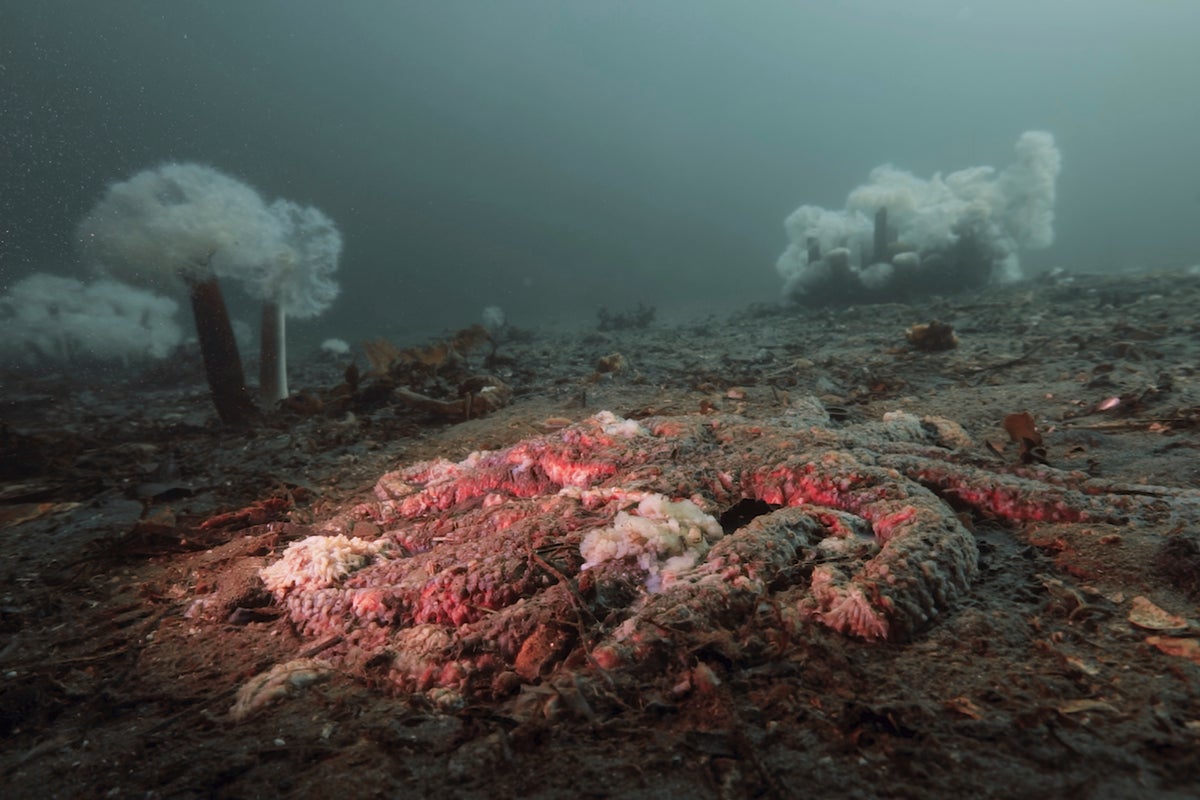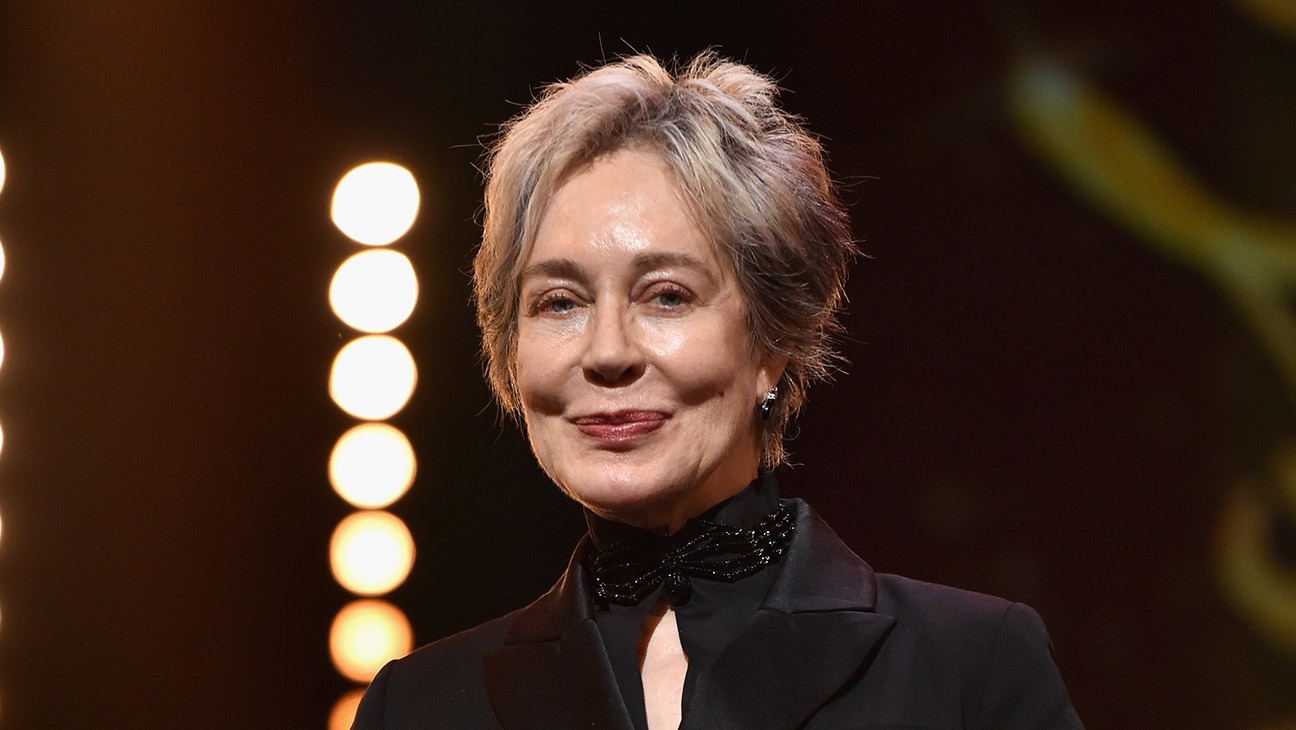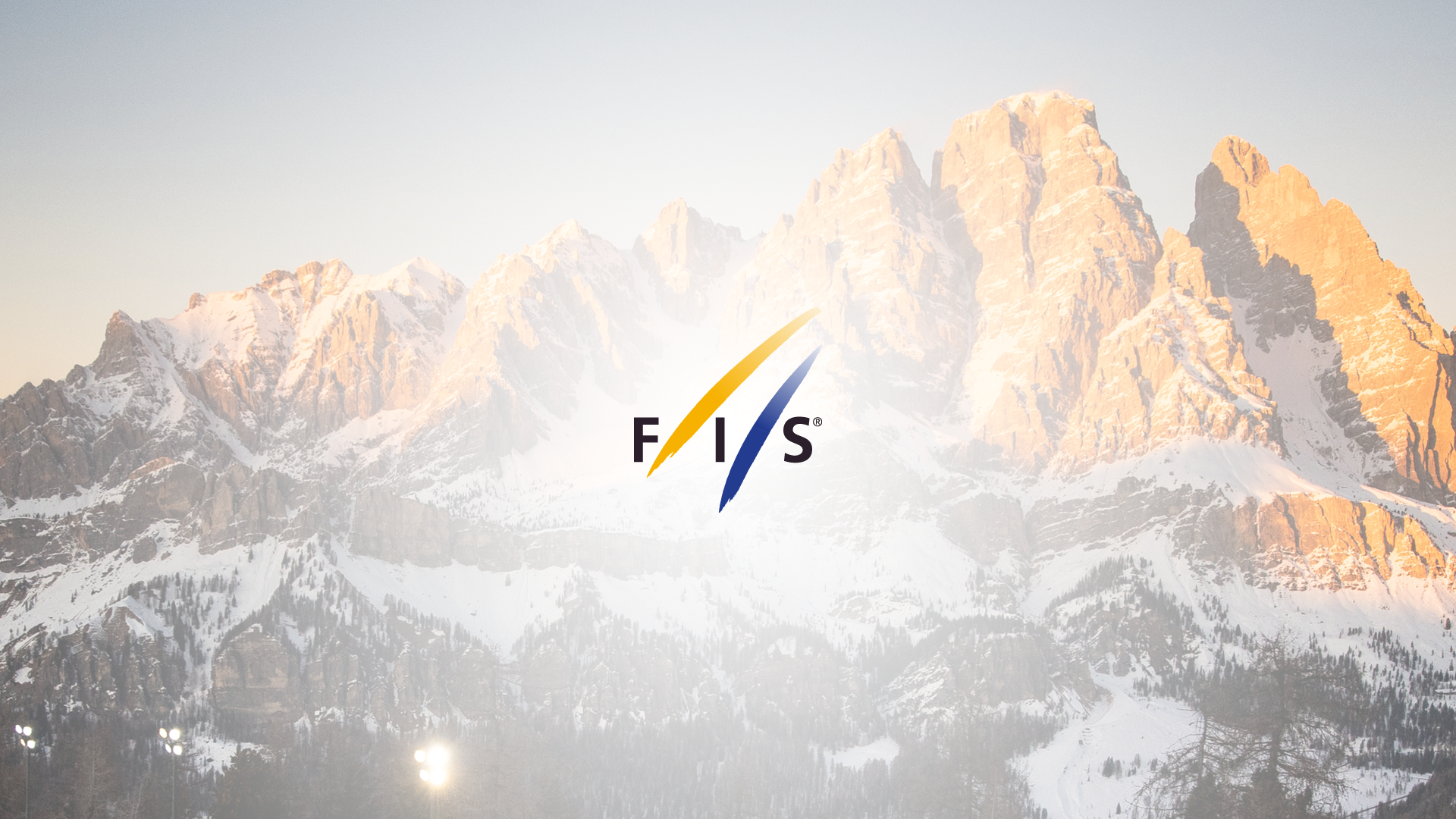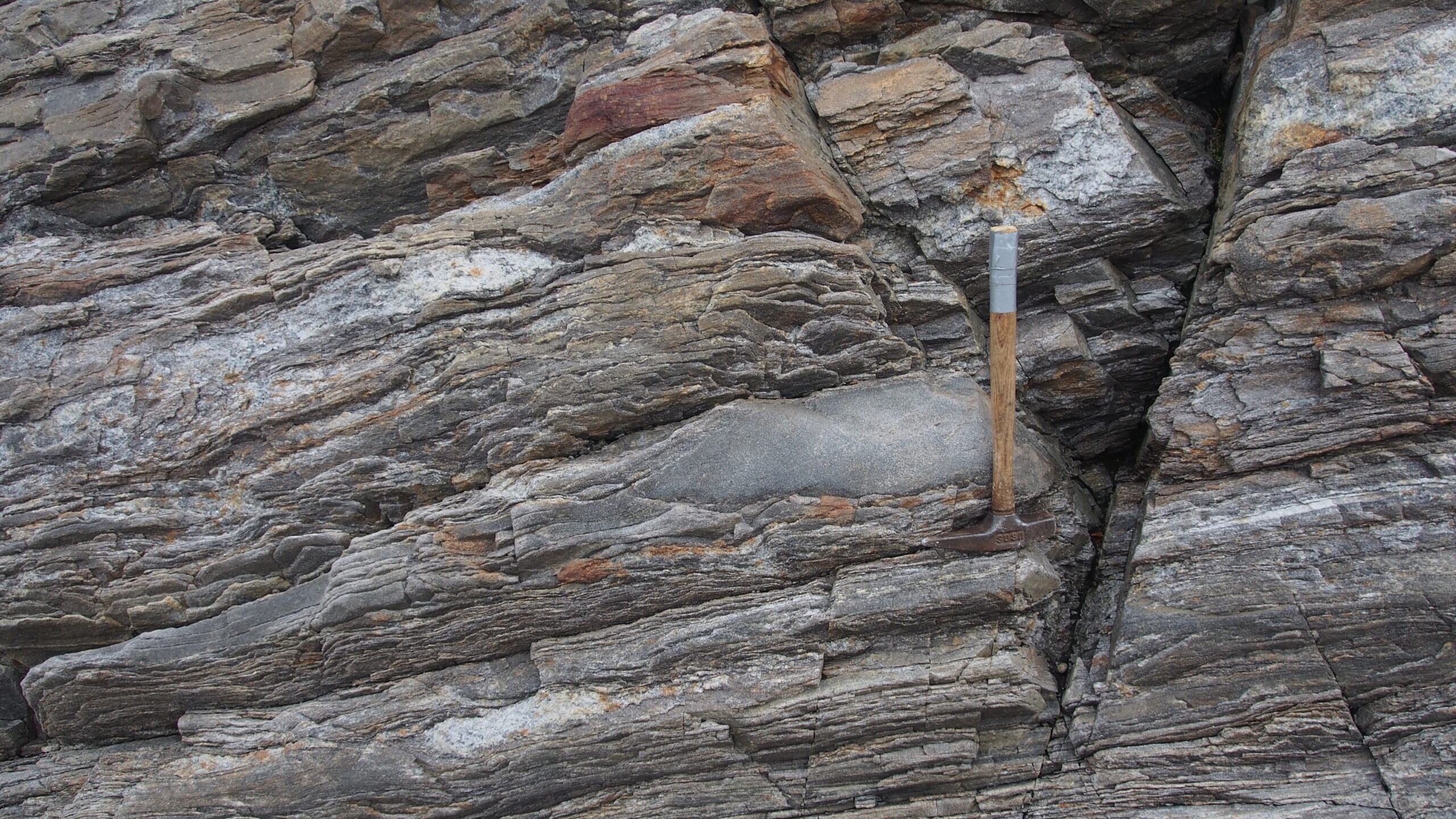In 2013, a mysterious epidemic swept across the Pacific Coast of North America, rapidly turning billions of sea stars from Mexico to Alaska into goo.
Its name, sea star wasting disease (SSWD), describes what you might have seen if you wandered the shores of the Pacific Northwest at that time: contorted sea star bodies and fragmented arms littered the sea floor, as the tissues of sea stars melted away within a matter of days.
In the more than 10 years that have followed, SSWD has been described as the largest epidemic ever recorded in a wild marine species and one of the 10 greatest unsolved ocean mysteries. Attempts to identify the pathogen responsible have turned up more questions than answers, until now.
We have recently published the findings of our five-year research project into the cause of SSWD.
Our team included multi-national and multi-disciplinary researchers from academic, government and non-profit institutions, a collaboration that was critical for the success of this work.
Together, we conducted laboratory experiments and analyzed data from wild outbreaks of SSWD to identify the pathogen responsible: a novel strain of the bacterium Vibrio pectenicida.
The significance of sea stars
Aside from the devastating loss of these charismatic rocky-shore inhabitants, the implications of this epidemic reverberate throughout the ecosystems sea stars inhabit.
More than two dozen species appear to be afflicted by SSWD, which vary in their susceptibility to the disease. Most susceptible is the sunflower sea star, a voracious marine predator and the largest species of sea star. They can grow to the size of a bicycle tire and have as many as 24 arms.
Almost six billion sunflower sea stars have been lost to SSWD, placing them on the critically endangered species list. With them, the kelp forest ecosystems they help to regulate have disappeared.
A group of sunflower sea stars with SSWD in Knight Inlet (Hakai Institute)
Sunflower sea stars keep kelp forests thriving by preying on sea urchins. With the rapid disappearance of these predators, unchecked urchin populations increased rapidly, mowing down kelp forests and replacing these lush, biodiverse ecosystems with urchin barrens.
The loss of kelp has had knock-on effects for the numerous species that rely on it for food and habitat. Alongside this staggering loss of biodiversity, millions of dollars from fishing and tourism are lost to impacted communities.
Although harder to quantify, the ecosystem services of kelp forests are also impacted, including water filtration, which improves water quality, sediment stabilization that protects coastlines from erosion and storms, and carbon capture that helps mitigate the effects of climate change.
Recovery of kelp forests, and the species reliant upon them, requires a deeper understanding of SSWD and the sea stars devastated by it. The first step in our research was to identify the culprit responsible, however, the task proved more difficult than we initially anticipated.
A pathogen is revealed
Among the many possible pathogens suspected of causing the SSWD epidemic, it is unsurprising that the culprit turned out to be in the Vibrio species group.
From multiple diseases in corals to cholera in humans, the abundance of harmful Vibrio species in our oceans is on the rise with climate change as these bacteria favour warmer waters.
However, narrowing in on the specific culprit was not an easy undertaking. Vibrio pectenicida has some unusual characteristics not observed in other Vibrio species, allowing it to evade detection for more than a decade.
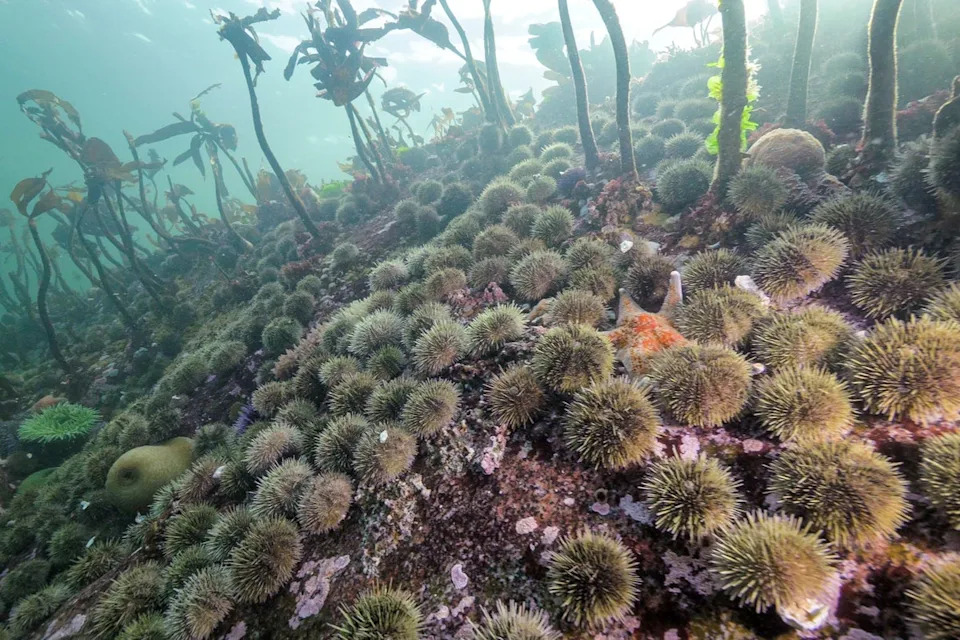
Sea urchins proliferate in Hakai Pass (Hakai Institute)
This was originally considered a risky and potentially unanswerable question. However, years of laboratory experiments and field sampling recently culminated in successful mortality-inducing experiments using a pure culture isolated by Amy Chan, a research scientist at the University of British Columbia, of the novel Vibrio pectenicida strain.
Named FHCF-3, it stands apart from previously identified strains (different genetic variants) by less than three per cent of its genome. Such strains have been isolated from diseased scallop larvae in France, crabs in the United Kingdom and, most recently, geoduck larvae from the Pacific Northwest.
Whether or not these strains can cause SSWD remains to be answered, but the potential implications are clear; with a large host range, broad geographic distribution, and propensity for warm seawater temperatures anticipated with advancing climate change, this pathogen is one to watch.
No time to waste
Like removing a blindfold, the identification of the pathogen causing SSWD unveils new opportunities for research and management of the species and ecosystems affected.
First on the list is developing a diagnostic test that can detect the genetic sequence of the pathogen. This would allow researchers to test sea star or seawater samples for its presence.
Much like the COVID-19 test eased humanity out of lockdowns, this test will help inform marine management by helping diagnose healthy versus sick sea stars, and identifying locations best suited for reintroduction efforts.
Another target of future research is to identify resilient sea stars (those that can either prevent infection entirely or fight it off once it takes hold) for conservation breeding.
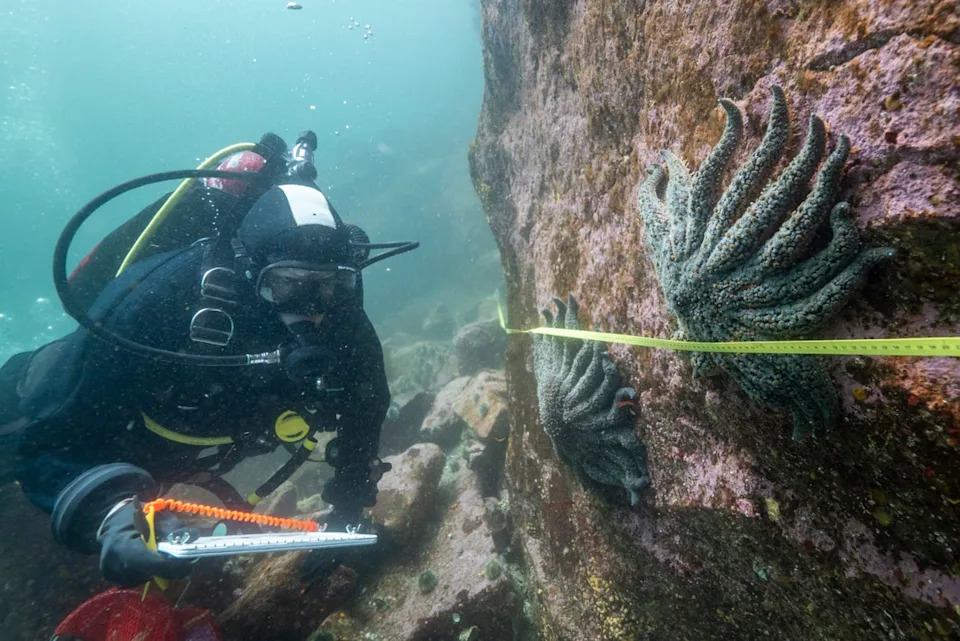
Researcher Alyssa Gehman counts and measures sunflower sea stars in the Burke Channel (Hakai Institute)
Resilient individuals, particularly of highly vulnerable species like sunflower sea stars, will be vital for recovery efforts in a warming ocean where Vibrio pectenicida is already widespread.
Despite the odds, the identification of the SSWD pathogen provides a new hopeful vision for our oceans and their inhabitants; one where disease-resilient sunflower sea stars once again roam the sea floor among thriving kelp forests replete with vibrant marine life.
Melanie Prentice is a Research Associate in the Department of Earth, Ocean & Atmospheric Sciences at the University of British Columbia.
Alyssa-Lois Gehman is an Adjunct Professor in the Institute for the Oceans and Fisheries at the University of British Columbia.
Drew Harvell is a Professor of Marine Ecology at Cornell University.
Grace Crandall is a PhD Student in Aquatic and Fishery Sciences at the University of Washington.
This article is republished from The Conversation under a Creative Commons license. Read the original article.
